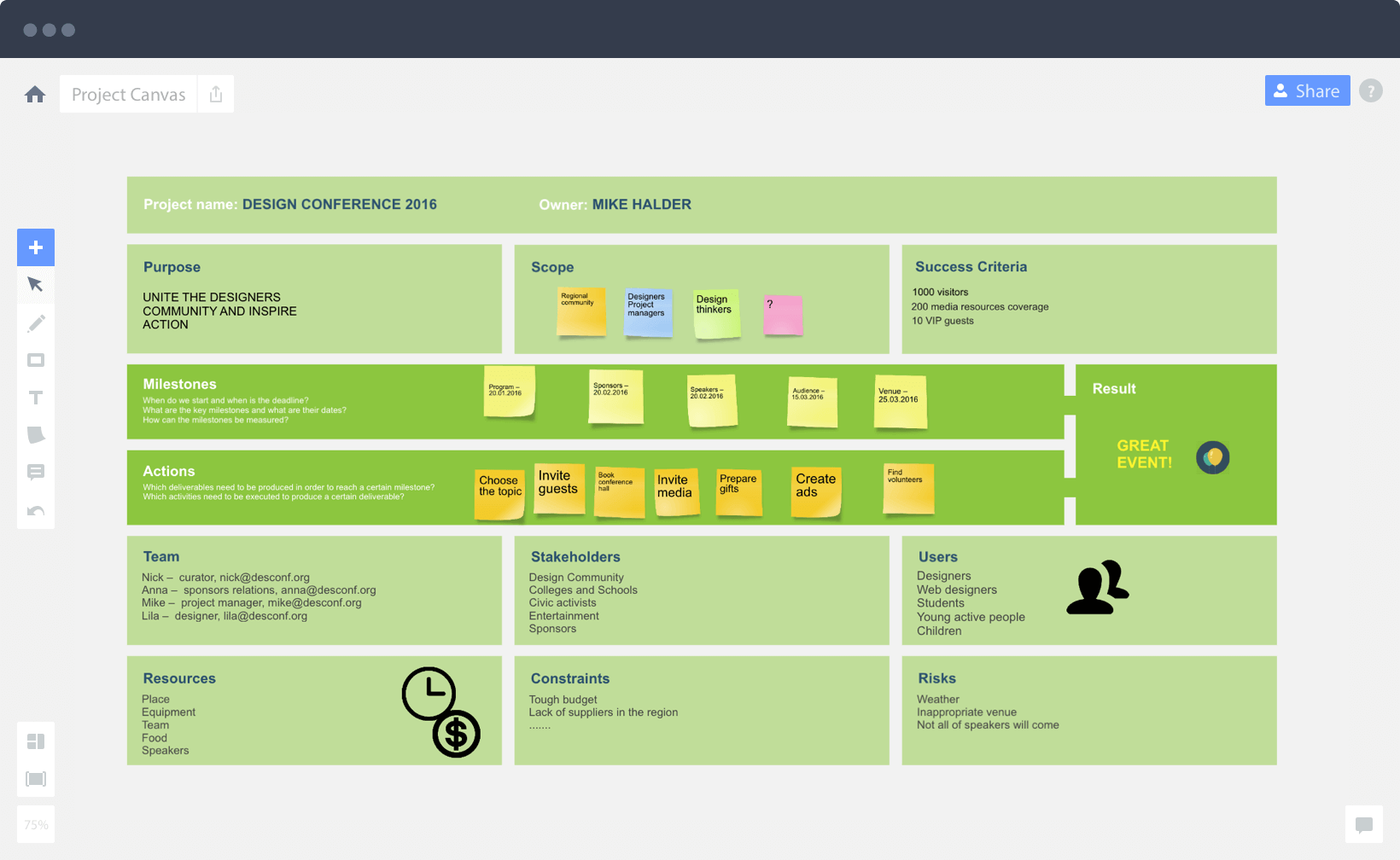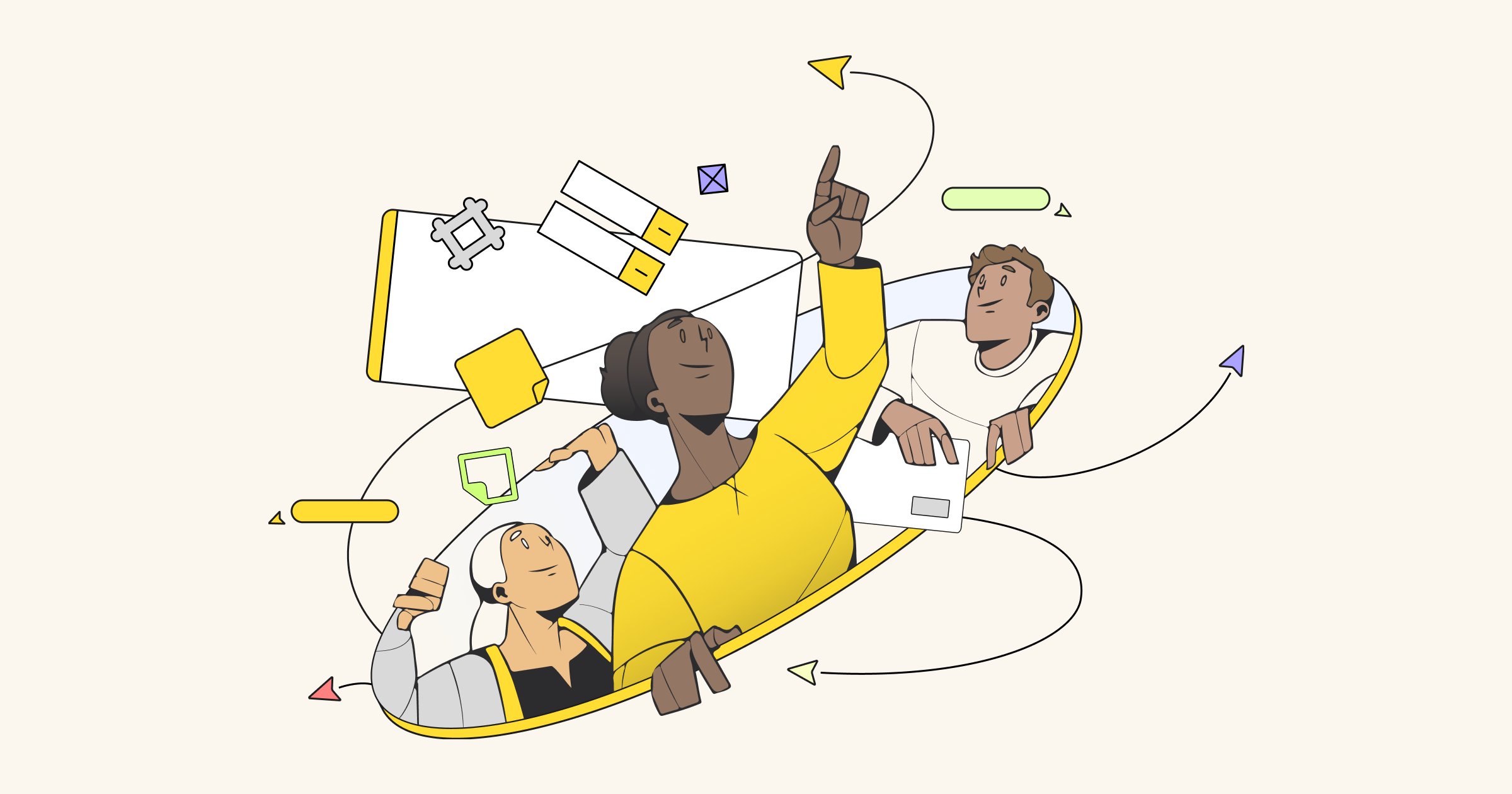A lot of us are involved in projects – from personal travel to a serious product launch. No matter what the size is, or the number of people involved, and whether you’re a project manager or just doing the daily gruntwork, it’s always necessary to have the big picture view and manage the key factors affecting your project. Let us introduce the Project Canvas II, which will become your new project management template.
Project Canvas II template is one of two Project Canvas templates represented in Miro. This one is more suitable for Project Management. If you want to read more about original Project Canvas developed by UX strategist Jim Kalbach, please, visit this page.
The story
We love visual tools and templates as they allow to simplify complex things, and this is exactly what project canvas template is built to do: provide a simple one page overview that everyone involved in a project can understand and use to communicate. To give you a better understanding of the tool and the values, we talked to Simon Stubben, founder of Project Canvas.
As Simon says, ‘Project Canvas is a visual tool for having everyone involved and understand the project in a simple way.’
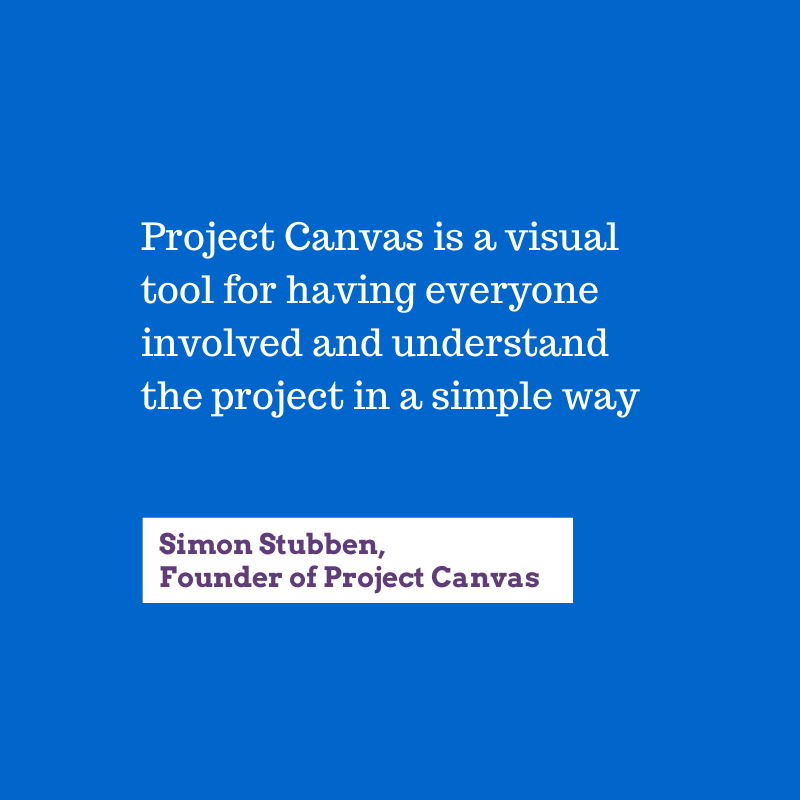
The idea came to Simon when he was working on the master’s thesis. He wanted to understand how project teams in corporate businesses communicated during their projects, and if the communication and decision making could be simplified. In the process he contacted different people and possible partners, from project managers to engineers, and this is how our visual tool for project management was born.
Inspiration. Sometimes less is more. Simon says: “Trying to simplify communication in projects was our first source of inspiration. It still is, but now the fact that we create value for people is really inspiring. Also the fact that I think many project management tools want to do way too much. They’ve simply become complex by introducing heaps of features. Focusing on simplicity and trying to make complex simple, is a tough one – but nevertheless a great driver for change and action.”
How to use Project Canvas in Miro – Express users guide
You can easily find the Project Canvas in among the templates when you create the board or in our Library, Business Canvases tab, it is called Project Canvas II. The Canvas is interactive, hence you can double-click in the boxes and type in there. Also you can use several canvases for different purposes on one board simultaneously.
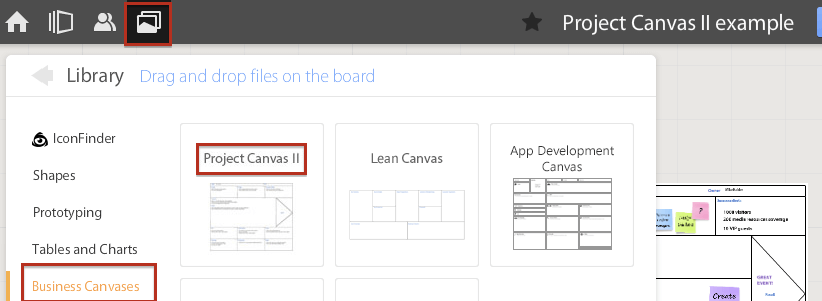
The tool is based on 12 well known project terms, which collectively give a complete project overview.
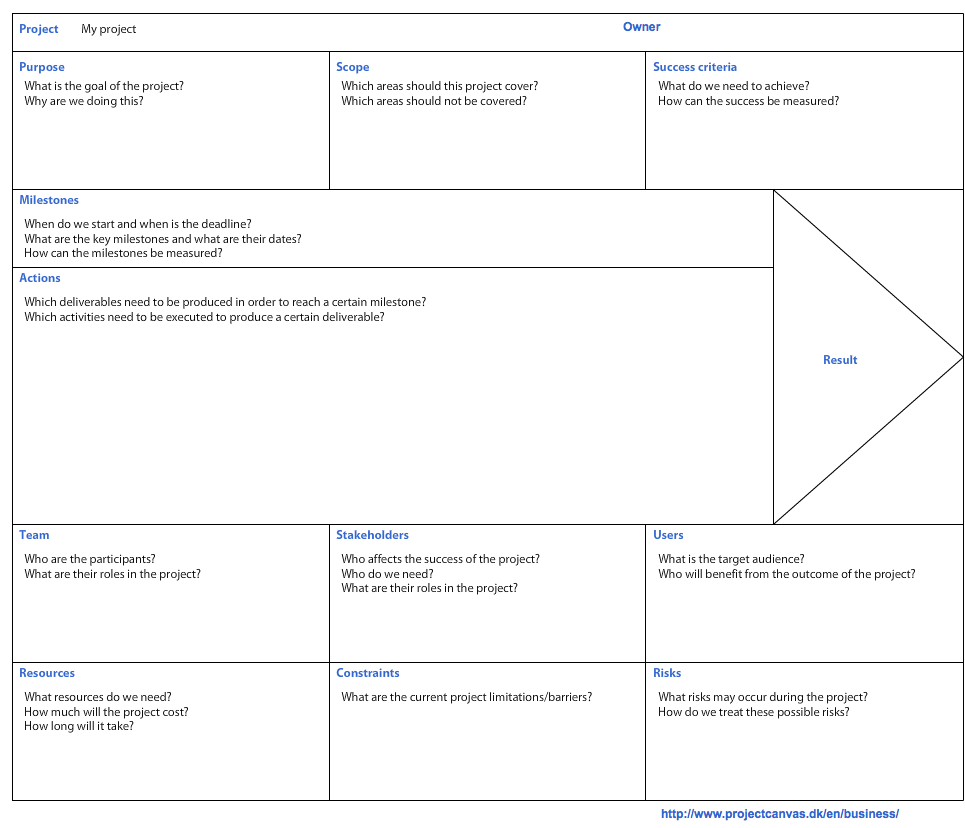
- Purpose. Describe the goal(s) of the project, explain why you are doing this.
- Scope. Which areas should be covered within the project, and which should not?
- Success Criteria. List the key metrics of you project, describe what you will consider as ‘success’.
- Milestones. Putthe start and finish dates here, list the key milestones with their respective dates.It would be great to add some metrics to each milestone.
- Actions. The projects outcome depends on your actions. Which deliverables need to be produced in order to reach a certain milestone? Which activities need to be executed to produce a certain deliverable?
- Result. Milestones and Actions give you a Result. Put your desired outcome here.
- Team. List team members involved in the project, describe their roles. It would be great to add contacts here. Make sure you read our guide to team building activities for remote teams.
- Stakeholders. Stakeholders are people and or organizations that can affect or be affected by the actions of the business as a whole. There are several types of stakeholders, the most common are government, employees, customers, suppliers, community, owners, investors. List here the most important for your business.
- Users. What is your project’s target audience?Who are those people? What are they doing? Why will they buy from you? You can try Persona templates or create Empathy map templates to understand your target audience better. Both templates are available in Miro.
- Resources. List here all the resources that you need to realize the project, including time, money, equipment, people, software etc.
- Constraints. What limitations or barriers do you have? How can you overcome them?
- Risks. Almost 100% of projects have risks, and it’s better to think about those risks and how you treat them before you start.
We took the simple project – conference organization – and made an example of Project Canvas in action. Get inspired and create yours!
